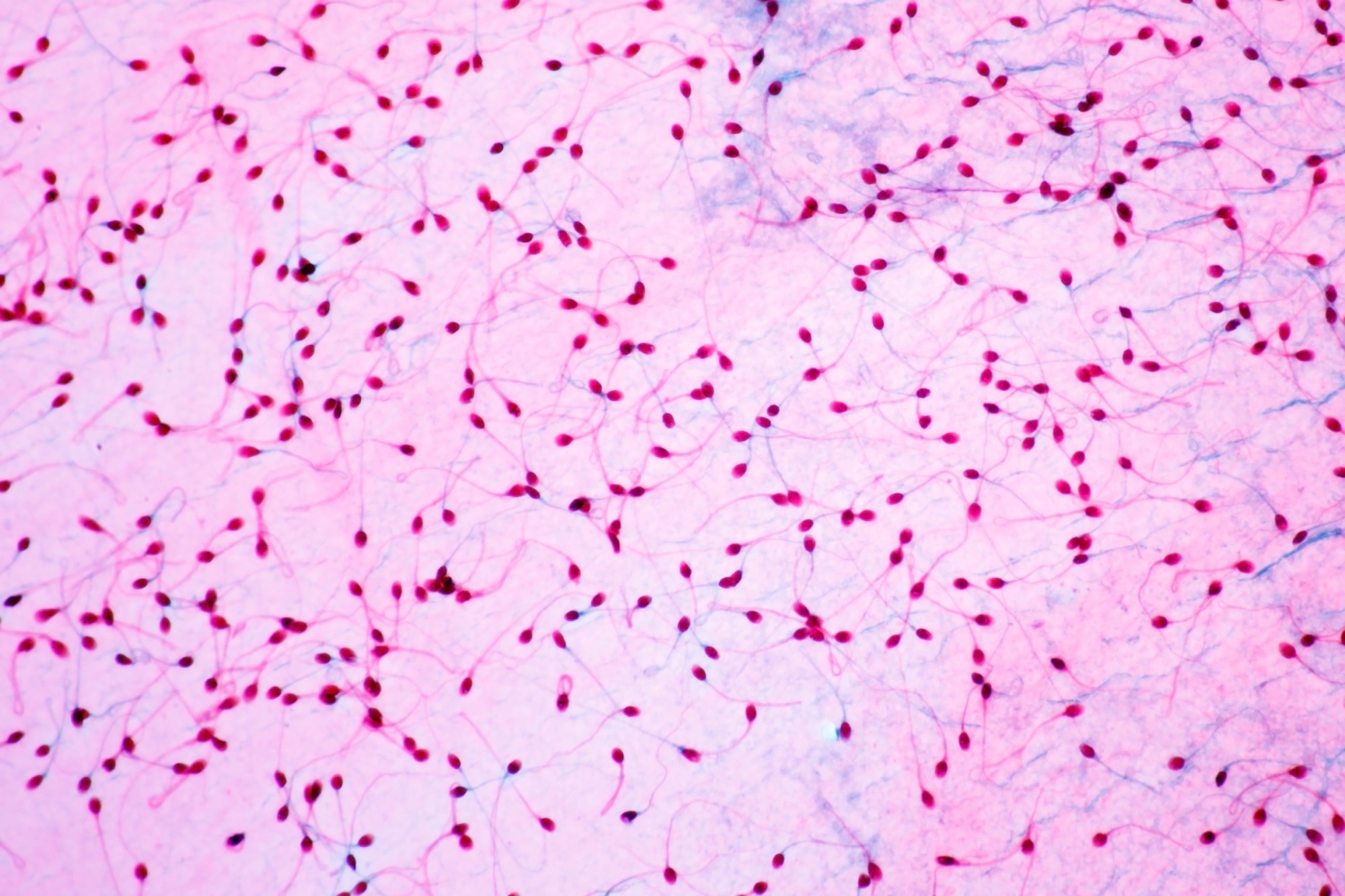In a recent article published in the journal Development, researchers investigate the role of the ACTL7B gene in sperm formation using Actl7b-deficient mice.
 Study: Actl7b deficiency leads to mislocalization of LC8 type dynein light chains and disruption of murine spermatogenesis. Image Credit: Komsan Loonprom / Shutterstock.com
Study: Actl7b deficiency leads to mislocalization of LC8 type dynein light chains and disruption of murine spermatogenesis. Image Credit: Komsan Loonprom / Shutterstock.com
Background
ACTL7B, a testis-specific actin-related protein (Arp), shares up to 60% amino acid identity with conventional actins and is highly conserved in rodents and primates. In mice and humans, ACTL7B is expressed exclusively in the testis, thus suggesting a role in spermatogenesis.
Several animal studies have associated ACTL7B with fertility, whereas studies involving human subjects have reported the presence of single nucleotide polymorphisms (SNPs) in the coding sequence of ACTL7B in cohorts of infertile men.
However, these studies have not directly implicated the ACTL7B gene with infertility. In addition, there remains a lack of studies elucidating the molecular function of ACTL7B.
About the study
In the present study, researchers apply clustered regularly interspaced short palindromic repeat (CRISPR)/CRISPR-associated protein 9 (Cas9)-mediated gene editing in zygotes of C57Bl/6J, a common inbred strain of laboratory mice, to generate Actlt7b-deficient mice to analyze the role of ACTL7B in spermatogenesis.
Two types of Actlt7b-knockout (KO) mice were generated, which included heterozygous (Actl7b+/−) and homozygous (Actl7b−/−) mice. A genotyping polymerase chain reaction (PCR) assay was used to discriminate the Actl7bΔ allele from wild-type mice (Actl7b+/+) with alleles from Actlt7b-KO mice.
Immunohistochemical staining against ACTL7B was performed on tissue sections obtained from the testis, caput, and cauda epididymis from heterozygous (Actl7b+/−), homozygous (Actl7b−/−), and wild-type (Actl7b+/+) mice.
The presence of any structural defects, including acrosome biogenesis, DNA condensation, manchette formation, and sperm tail formation in the sperms of Actl7b-deficient male mice, was also determined using transmission electron micrography (TEM).
ACTL7B-protein interaction changes in the testicular proteome of Actl7b-deficient mice were also assessed. To this end, the researchers coupled anti-ACTL7B antibody to Dynabeads and used uncoupled beads as a control. Following this co-immunoprecipitation experiment, mass spectrometry (MS) was utilized to identify eluted proteins from whole testes of five mice from homozygous, heterozygous, and wild-type groups.
Principal component analysis (PCA) showed differential clustering of all three samples, whereas differential abundance (DA) analysis revealed protein abundance in Actl7b+/− as compared to Actl7b+/+ samples.
An evolutionary analysis of ACTL7A and ACTL7B genes was also performed, as these genes exhibit sequence similarity and are testis-specific. This analysis allowed the researchers to compare the conservation of these genes and predict their essentiality.
Study findings
Spermatids of Actl7b-deficient mice were arrested during development, which subsequently led to the development of several abnormalities after step nine of spermatogenesis, including malformed flagella. Consequently, most spermatids were degraded.
Some of these degrading spermatids collected in the lumen of the seminiferous tubules with other immature spermatids that were eliminated by Sertoli cells. This was confirmed by increasing levels of autophagy marker proteins in Actl7b−/− testes.
MS analyses revealed that ACTL7B specifically interacted with dynein light chains LC8-Type 1 and Type 2 (DYNLL1 and DYNLL2), which appear in step nine of spermatogenesis. Furthermore, ACTL7B appears to exert its effects through interactions with the microtubule network or dynein 1 motor complex, rather than the actin cytoskeleton.
Conversely, Actl7b+/− male mice exhibited reduced ACTL7B levels and remained similarly fertile as wild-type mice.
Previously, Actlt7b-KO mice were reported to be infertile due to severe oligoteratozoospermia, as well as malformed sperm tails and heads, and a 10-fold reduction in sperm counts as compared to wild-type mice. However, in the current study, sperm counts in KO mice were about 32,000, which was a 1,000-fold reduction as compared to the approximately 32,000,000 sperm cells observed in wild-type mice. This is likely due to phenotypical differences in the parental mouse strains used.
Both models exhibited reduced germ cell loss, epididymal sperm number, and immature germ cell release in and from the testis, along with several structural sperm abnormalities.
Conclusions
As human and mouse ACTL7B genes are highly similar, the study results suggest that ACTL7B variants can lead to failed spermatogenesis and male infertility in humans. Furthermore, since ACTL7B could help distinguish between obstructive and non-obstructive azoospermia with high accuracy at translational and transcriptional levels, the presence of this gene could potentially be utilized as a biomarker for male infertility in the future.
Journal reference:
- Merges, G. E., Arévalo, L., Kovacevic, A., et al. (2023). Actl7b deficiency leads to mislocalization of LC8 type dynein light chains and disruption of murine spermatogenesis. Development 150(21). doi:10.1242/dev.201593